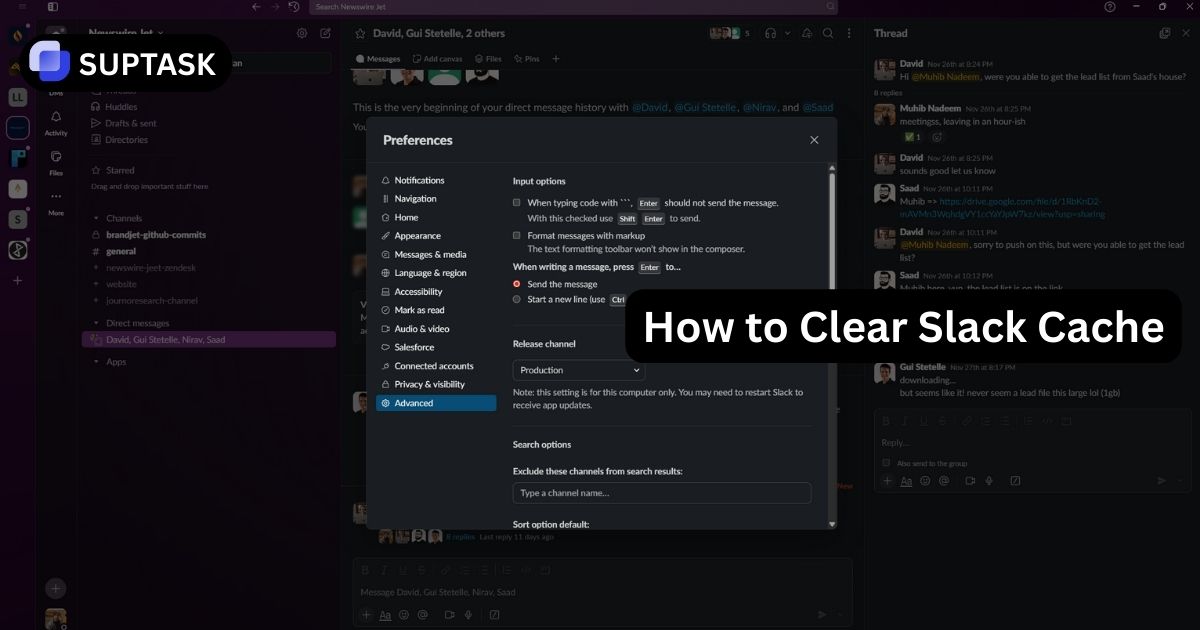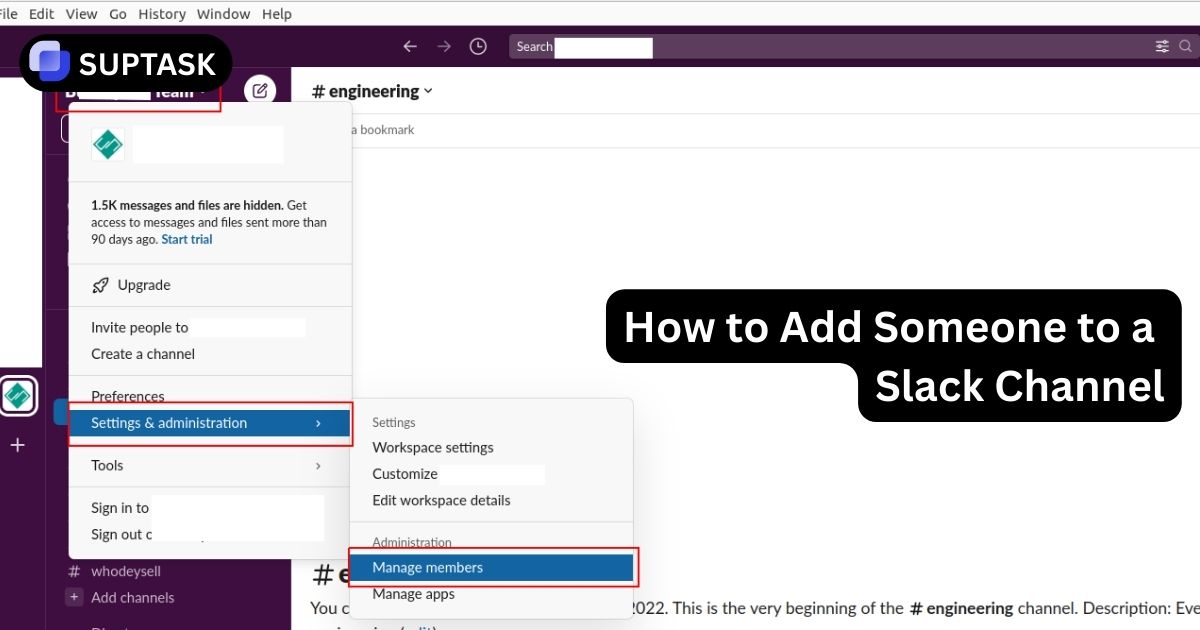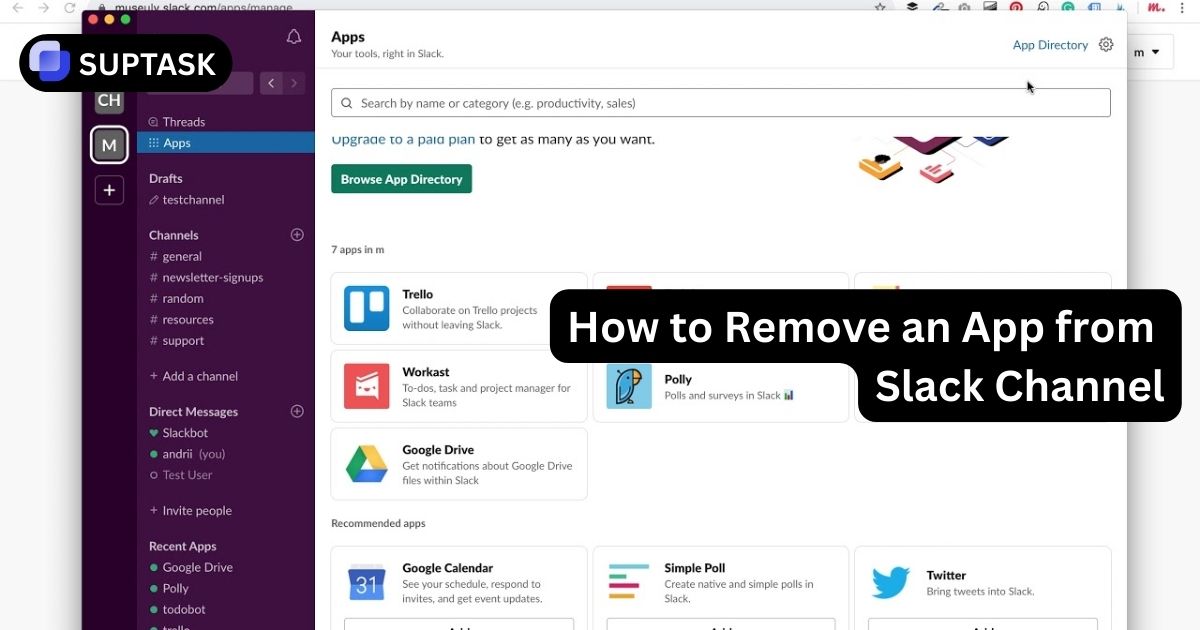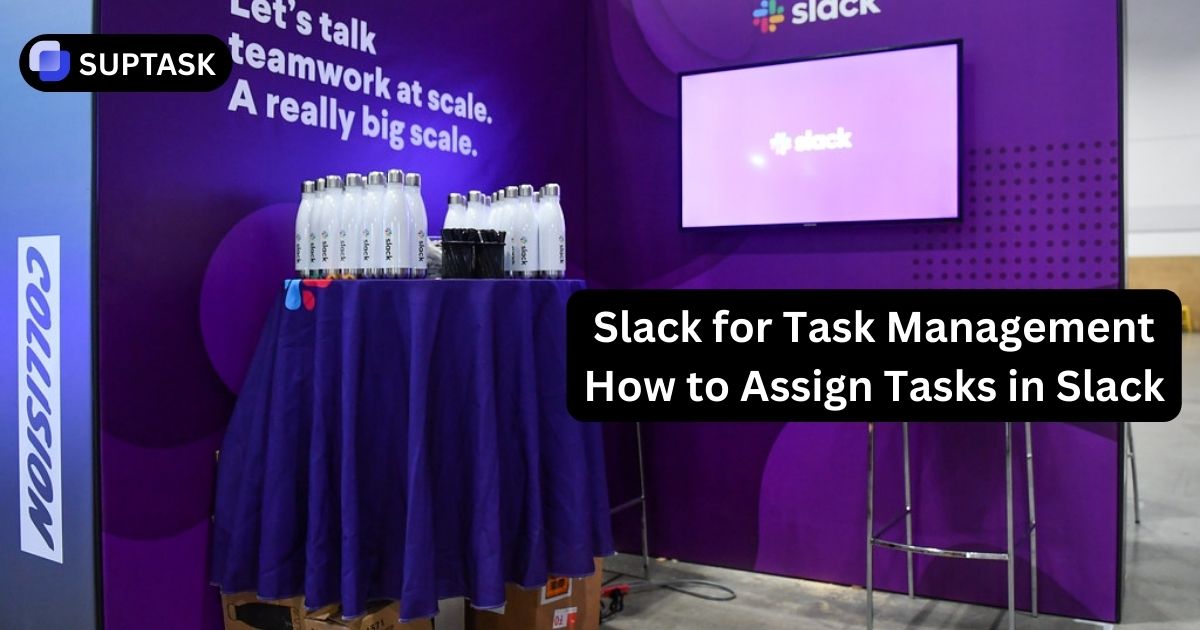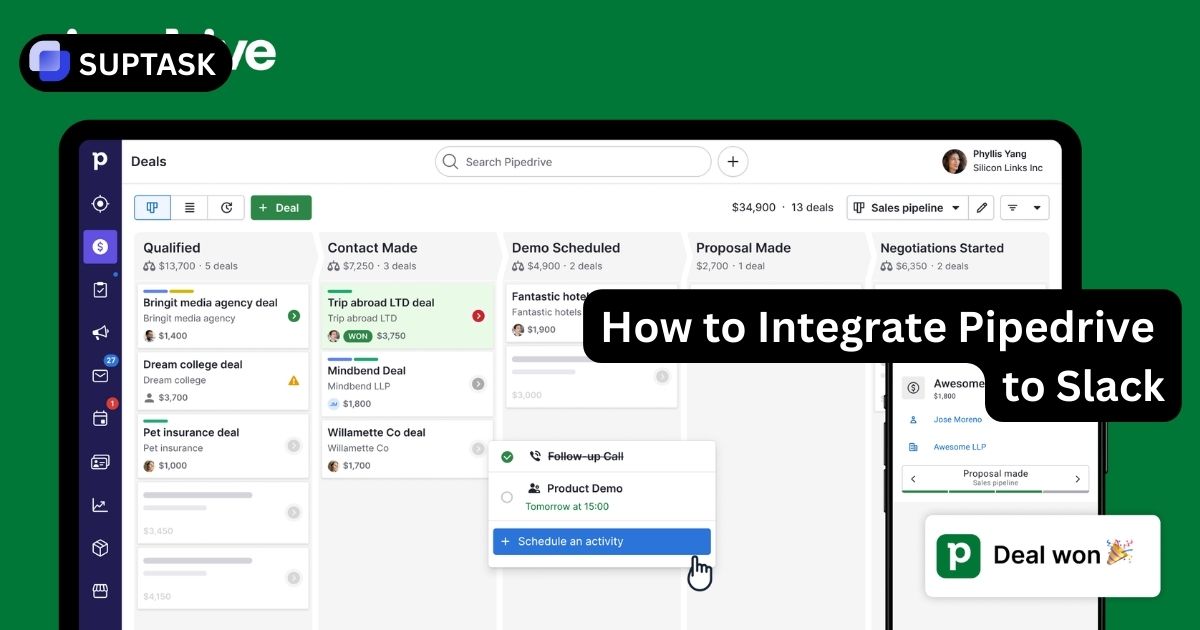Slack is no longer just a messaging platform but one of the most powerful tools for team and workflow management. However, the question remains: how can you use it to structure projects, assign tasks, and follow up on progress without leaving the platform?
This manual will demonstrate the use of Slack in project management as a revolutionary idea, and the local tool Suptask, which can elevate your Slack workspace to a higher professional level of effectiveness.
Why Use Slack for Project Management
Many people who work with teams still wonder whether Slack is a project management tool. In a technical sense, Slack isn't one, but with proper use, it can yield results even superior to those of traditional platforms.
Reasons for a project manager to adopt Slack are the following:
- Centralized communication: Besides email, which is a thread that never ends, conversations in Slack channels are organized by topic, client, or project. This not only makes it easy to locate decisions and updates, but also does so from one place open to all.
- Transform your Slack environment in a ticketing system: with Suptask, Slack turns into a way to manage your projects.
- Transparency and visibility: Because everything is in a searchable string for any project manager, there is no need to look up who said what and when, resulting in a high level of accountability.
- Real-time collaboration: Team members can come up with new ideas, solve problems, or check on work without setting up a meeting.
- Integration ecosystem: Slack has over 2000 tools that can be linked to Google Drive or GitHub; hence, it can be a single hub for the different workflows.
- Automation and efficiency: Reminders, workflows, and bots that automate tasks, such as repetitive ones, can run in the background while you manage progress or do other things.
How to Organize Slack for Projects
Setting up a workspace correctly is a must before one can think of ticketing and automation. The way your Slack is organized will be the key to how efficient your project management via Slack is.
Using Slack for Project Management: Tools and Techniques
After organizing your workspace, it's time to turn Slack into your project management hub. Here are some handy methods to accomplish it efficiently.
1. Turn Conversations into Action
One of the primary sources of new ideas, project discussions, can, in a very short time, generate tens of requests. The challenge? The task of turning them into assignments. Instead of using a different tool for that, you can use Suptask, a very fast and simple-to-use ticketing and issue management solution built entirely inside Slack.
With Suptask, you get the following capabilities:
- With a single mouse click, you can turn any Slack message into a ticket.
- Assign it to the people you are working with and set the due dates and the priorities.
- Attach files, and add notes and internal comments.
- Monitor the progress of every ticket directly from Slack.
So, in fact, you do not have to switch between the different tools just to copy and paste your tasks anymore. You can do everything in one place: the discussion, the assignment, and the tracking.
2. Automate Status Updates
With the help of Slack’s Workflow Builder, you can prompt your team for their input in a totally unattended fashion. For instance:
- Every Monday, you may want to ask the question: “What will you work on this week?”
- Every Friday, you may want to ask: “What has been completed?”
The response may be channeled to a summary channel, so the project manager gets a quick overview without spending time in additional meetings.
Another way of employing these workflows is to have them interact with Suptask. When someone sets the ticket status to "done", workflows can automatically update the status or post the completion summary to the channel.
3. Integrate Project Tools You Already Use
One of the reasons Slack and project management are such a good fit is their integrations. You can hook up your present systems:
- Google Drive / Notion: for storing documents and taking notes.
- GitHub / GitLab: for software development tracking.
- Clockify: for recording time.
Slack acts like a mailbox in which all notifications from these platforms are brought to one place, and this way you avoid opening multiple tabs to stay updated.
4. Manage Private or Sensitive Tasks
Information about projects does not have to be available to everyone. Among other things, conversations about budgets, human resources, or confidential client data might be involved. With Suptask, you can create a private ticket for sensitive issues in Slack. Only authorized users will have access to these tickets, thus enabling both transparency and security where necessary.

Daily Workflow Example with Slack + Suptask
It is an illustrated help to understand the operations. The following is a typical schedule for a project team:
- Morning check-in: In the #daily-standup, team members share brief updates on their activities.
- Incoming requests: The client writes feedback #client-acme. The message is changed into a Suptask ticket.
- Task assignment: The project manager assigns a designer a due date to accomplish the task.
- Progress tracking: The designer changes the ticket status to “in progress.” Slack makes the update without any intervention.
- Review and approval: The manager, upon completion, reviews the ticket to ensure it is done.
- End-of-week report: With Suptask, it is easy to report, as its analytics dashboard summarizes completed tasks.
At every step, the actions are performed within Slack — no external task management tool is required.
Slack and Project Management: The Perfect Match
The integration of Slack and project management workflows creates a linked system where communication and action are two sides of the same coin. You can simply chat, confirm, and deliver, without leaving your digital workspace.
When supplemented with Suptask, Slack is not only a tool for discussion; it becomes an organized, accountable, and transparent project management environment.
No matter whether you are handling marketing campaigns, product development, or client support, the current configuration will keep your team members not only in sync but also efficient.



